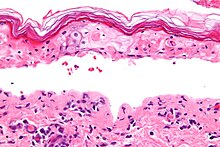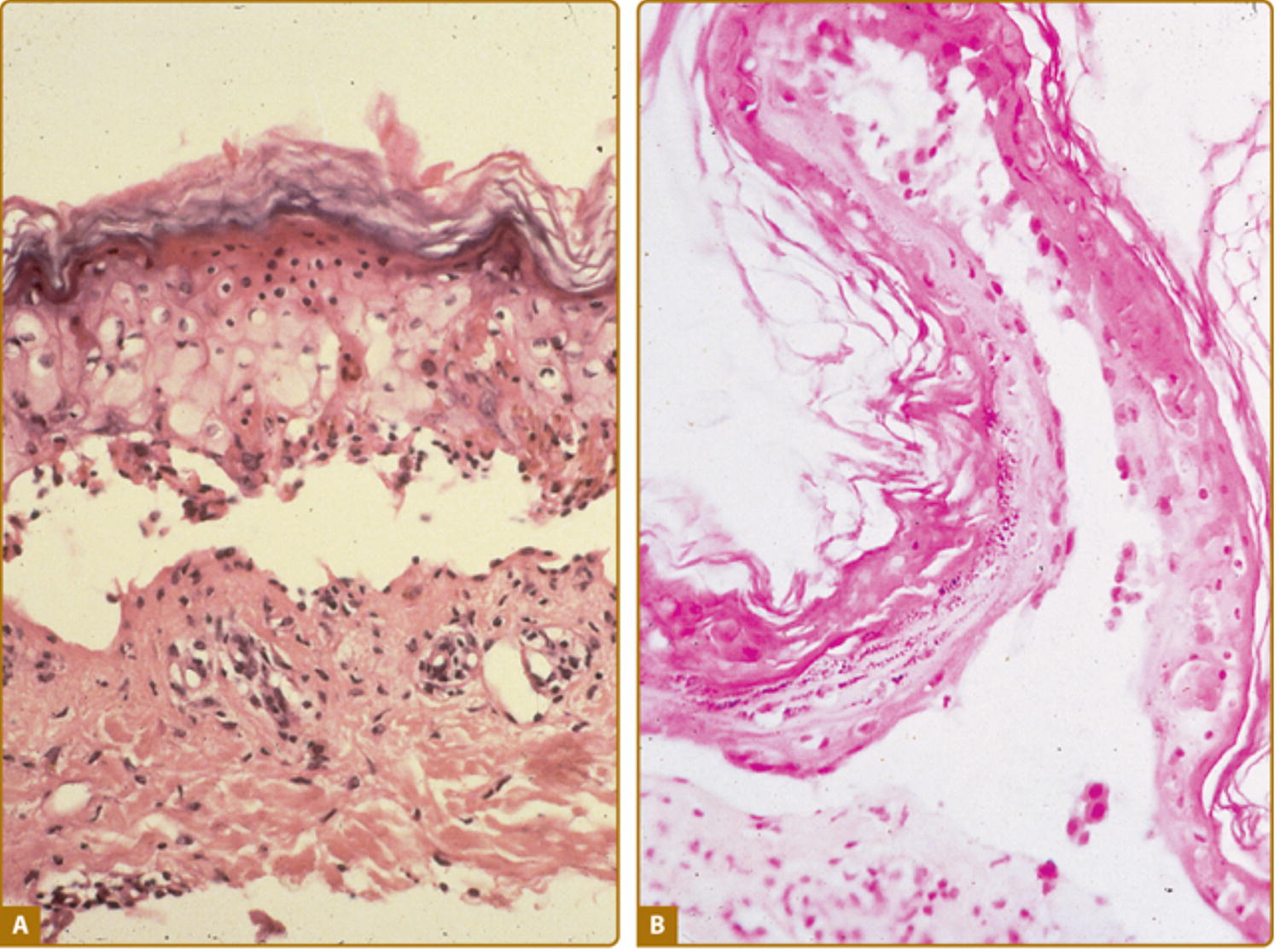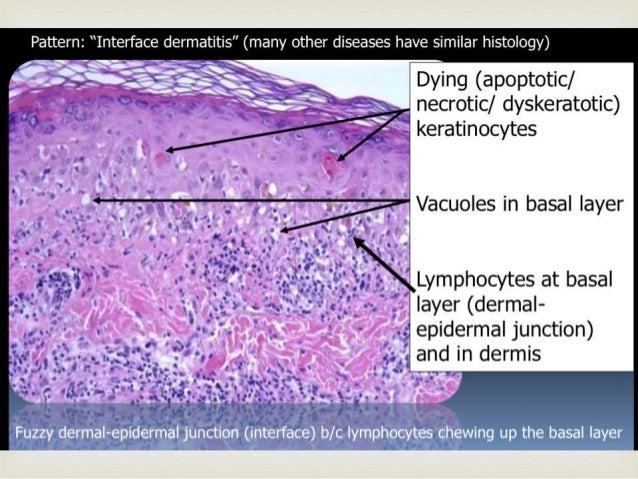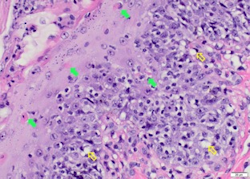Steven Johnson Syndrome Histology
Steven johnson syndrome histology. Particular neurological aspects in vascular autoimmune diseases. Definition general Historically there has been controversy as to whether Stevens-Johnson syndrome SJS is a distinct entity or at the center of the disease spectrum that includes erythema multiforme EM and toxic epidermal necrolysis TEN. Subepidermal bullae with basement membrane in bullae roof due to dermal edema.
Your mucus membranes including your eyes genitalia and mouth are also affected. Stevens-Johnson syndrome SJS and toxic epidermal necrolysis TEN are serious skin conditions that cause your skin to develop rashes blisters and then peel. If you get this condition youll likely be admitted to a hospital.
Mucous membranes are affected in over 90 percent of patients usually at two or more distinct sites ocular oral and genital. The affected skin eventually dies and peels off. Stevens-Johnson syndrome is also called mucocutaneous ocular syndrome and causes severe erythema exsudativum multiform 1.
It can also sometimes be caused by an infection. SJSTEN is a rare acute serious and potentially fatal skin reaction in. Gastrointestinal genital conjunctival with.
1Department of Ophthalmology Oregon Health Sciences University Portland. Rheumatoid purpura Stevens-Johnson syndrome rheumatoid arthritis and systemic lupus erythematosus. Although they were once believed to be distinct diseases many observers currently consider erythema multiforme Stevens-Johnson syndrome and toxic epidermal necrolysis to represent a mild-to-severe continuum of the same process.
Severe dermal inflammatory infiltrate includes lymphocytes histiocytes Eosinophils may be present but neutrophils are sparse or absent. Stevens-Johnson syndrome SJS and toxic epidermal necrolysis TEN are severe mucocutaneous reactions most commonly triggered by medications characterized by extensive necrosis and detachment of the epidermis 1. TEN is at the severe end of a spectrum with Stevens-Johnson syndrome defined by 30 body surface area skin detachment.
Stevens-Johnson syndrome SJS and toxic epidermal necrolysis TEN are clinically similar except for their distribution. Histology of toxic epidermal necrolysis.
Definition general Historically there has been controversy as to whether Stevens-Johnson syndrome SJS is a distinct entity or at the center of the disease spectrum that includes erythema multiforme EM and toxic epidermal necrolysis TEN.
Stevens-Johnson syndrome SJS and toxic epidermal necrolysis TEN are clinically similar except for their distribution. Stevens-Johnson syndrome is usually caused by an unpredictable adverse reaction to certain medications. Stevens-Johnson syndrome is also called mucocutaneous ocular syndrome and causes severe erythema exsudativum multiform 1. Mucous membranes are affected in over 90 percent of patients usually at two or more distinct sites ocular oral and genital. Your mucus membranes including your eyes genitalia and mouth are also affected. Rheumatoid purpura Stevens-Johnson syndrome rheumatoid arthritis and systemic lupus erythematosus. Skin and mucosal surface eg. Stevens-Johnson syndrome and toxic epidermal necrolysis are severe adverse cutaneous drug reactions characterized by widespread skin and mucous membrane detachments including bronchial mucosa which may be associated with respiratory failure requiring mechanical ventilation. Involvement of 10 to 30 of body surface area is considered SJSTEN overlap.
Skin and mucosal surface eg. Stevens-Johnson syndrome SJS and toxic epidermal necrolysis TEN are severe mucocutaneous reactions most commonly triggered by medications characterized by extensive necrosis and detachment of the epidermis 1. Pathology Stevens-Johnson syndrome is thought to be triggered by preceding viral infection or more commonly medication use eg. Gastrointestinal genital conjunctival with. Microscopic histologic description. Particular neurological aspects in vascular autoimmune diseases. Your mucus membranes including your eyes genitalia and mouth are also affected.











































Post a Comment for "Steven Johnson Syndrome Histology"